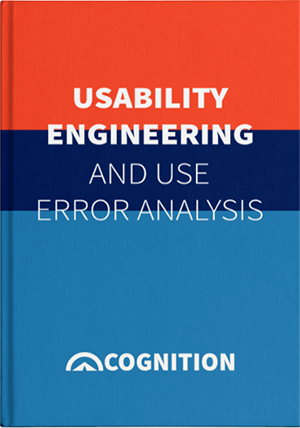Cognition Blog
Our blog navigates product development and compliance for the life science industry. Our solutions save time and money, delivering products with less risk.

requirements | design controls | 21 CFR 820.30
By:
Sally Carter
October 1st, 2020
There are many inputs to consider when designing a new medical device product: user needs, regulatory requirements, and internal and external customer requirements, to name a few. Finding harmony and documenting everything is not a simple paperwork exercise. This can be overwhelming to even the most seasoned medical device professional. How do you make sure the user needs are linked to actionable requirements, and ensure that all requirements have been addressed?

Medical Device | Product Development | Compass
By:
Ansgar Liening
August 27th, 2020
Often in medical device product development, functions exist in silos. Risk, requirements, and test management functions often exist separately, on their own - different systems, different teams, different objectives. Yet, the data related to these functions are both continuously changing and highly dependent on one another. Some type of process is needed to (1) manage the effect of changes across all three systems and (2) provide evidence of a process for notified bodies if and when needed.

Subscribe to the blog and get this guide for free

Medical Device | Risk | Risk Management
By:
Ben Higgitt
August 11th, 2020
SEPARATE RISK MANAGEMENT AND FMEA FOR BETTER MEDICAL DEVICE DEVELOPMENT. The below is an excerpt of the article originally published on MDDI. FMEA (Failure Mode and Effects Analysis) is utilized to identify potential failure modes in the design or manufacturing of a product. But risks associated with medical devices are not created by failures alone. A product may never fail, but there are still potentially many other risks.

design controls | Medical Device | Compass
By:
Cognition Corporation
July 27th, 2020
Commonly issued after an FDA inspection, a Form 483 informs a company of observations requiring corrective actions. The Form 483 is often referred to as “Inspectional Observations” as it is a list of conditions or practices that indicate a potential violation of FDA requirements. The form is compiled in order of importance and is considered a snapshot of potential issues; it should not be considered all-encompassing.

By:
Cognition Corporation
November 27th, 2019
There are many immediate short-term benefits a compliance software tool can provide to your life science organization: improved documentation, streamlined day-to-day compliance activities, project data unification, and other advantages. But there are many important long-term benefits that may get overlooked. When deciding to adopt these software tools, it’s important to understand how they can promote growth and innovation at your company.

By:
Cognition Corporation
November 21st, 2019
The market for digital health products is rapidly expanding. Reports from Global Market Insights, Inc. project the value of this marketplace to expand to $504.4 billion by 2025. Many life science organizations have seen the opportunity these technologies can provide and are jumping at it. However, this boom in the industry has not gone unnoticed; in recent years, FDA has been rapidly transforming their policies and organization to handle the necessary regulatory work these digital health products bring to the table.

Product Development | Thought Leadership | Risk Management
By:
Cognition Corporation
November 19th, 2019
Your product’s intended patients have a wealth of experience and information that can be valuable to your development process. Whether it’s the day-to-day realities of the condition, the symptoms they feel need the most attention, or things they might be missing in their current treatment regimens, this data cannot be elicited from doctors and engineers alone.

By:
Cognition Corporation
November 14th, 2019
FDA Form 483 Inspectional Observations are one of the many tools the agency uses to verify medical device products do not expose users and patients to undue risk. Many of the commonly cited observations involve some aspect of design controls regulations, which is of particular concern for development teams and manufacturers. Of the 438 inspectional observations in FY2017, FDA cited three design controls regulations more commonly than all others:

By:
Cognition Corporation
November 12th, 2019
Deciding to adopt a compliance software tool is not always a straightforward process. There are a number of aspects that need to be addressed—potential quality system issues, user adoption, and so on. Despite these concerns, however, there are some clear benefits to software adoption that should be taken into account. From improving documentation to establishing greater accountability, there are four distinct reasons to consider adopting compliance software.

info@cognition.us
1 (781) 271-9300
24 Hartwell Avenue,
Lexington, Massachusetts 02421
©2026 Cognition Corporation | Privacy Policy